Analysis of Changes in Profitability and Growth Cisco System
Analysis of Changes in
Profitability and Growth: Cisco Systems, Inc.
1
By any stretch of the imagination, Cisco System
s (CSCO) has been a strong growth company. A
darling of the Internet boom of
the late 1990s, it was one of the few technology companies tied to
the Internet and telecommunications
that prospered during that era.
Its products - networking and
communications equipment such as router and sw
itching devices - built the infrastructure of the
Internet. While most Internet
and telecommunications firms str
uggled and failed, their supplier,
Cisco, capitalized on the new technology. At one poi
nt in 2000, its market capitalization was over
half a trillion dollars, the largest market capitaliza
tion of any firm ever.
Its stock price increased
from $10 in 1995 to $80 in 2000, supported by sales growth from $2.0 billion in 1995 to $18.9
billion 2000.
In early 2000, Cisco’s P/E stood at 130 so investors
saw plenty of room for more earnings growth.
However, with the subsequent collapse
of the technology bubble
and the demise of
telecommunications firm such as WorldCom, Qwes
t, and AT&T, the anticipated growth failed to
materialize. Indeed, in 2001 Cisco wrote down
inventory by an astonish
ing $2.3 billion (under the
lower-of-cost-or-market rule), to reflect the dr
op in demand for its products and the emergence of
second-hand telecom equipment market.
Exhibit 1 presents Cisco’s income statements fo
r the fiscal years 2000-2002 and balance sheets for
1999-2002. The exhibit also includes
the cash flow from operations a
nd cash investing sections of
the cash flow statements. The 2000 sales of $18
.9 billion were up from $12.2 billion in 1999 and
$8.5 billion in 1998, a tremendous gr
owth record. But subsequent
sales growth was not as
impressive, as you can see, and led to declini
ng earnings. Indeed, Cisc
o posted a loss for 2001.
Lower earnings on increasing shareholders’ equity clea
rly implies that residual income is declining.
By the end of 2002, Cisco’s shares traded
at $15, well down from the 2000 high of $80.
Other information, most of the from the 10-K f
ootnotes, that was useful in reformulating the
financial statements is presented below. Note th
at the cash flow statements from Exhibit 1 are
particularly useful for identifying core income becau
se some of the items in the reconciliation of net
income to cash flow from operati
ng activities involve unusual items.
Questions:
1.
What adjustments are necessary to reformulate
the income statements and balance sheets to
properly separate financ
ing from operations?
2.
What adjustments are necessary to separate
core operations from othe
r sources of income?
What items are identified as
core in the Balance Sheet?
3.
Calculate Core RNOA and decompose the ratio for Cisco for 2002 and 2001.
1.
Long-term investments are comprised of the following:
2002
2001
2000
1999
Equity investments 567 1,529 6,225 877
Debt investments 8,233 8,817 7,463 6,155
8,800 10,346 13,688
7,032
All short-term investments ar
e debt investments. Restri
cted investments are debt
investments.
2.
$50 million of cash and equivalents
is regarded as operating cash.
3.
“Interest and other income” in the income statements is composed as follows.
2002
2001 2000
Interest income 895 967 577
Gain (loss) on investments (1,104) 163 531
(209) 1,130
1,108
The gain on investments applies mainly to
debt and equity investments, but does include
some derivative
gains and losses and other small items.
4.
The change in accumulated other comprehensiv
e loss for all years was due almost entirely
to unrealized gains and lo
sses on debt investments.
5.
Cisco’s income tax rate (combined
federal and state) is 36.8 percent.
| Analysis of Changes in Profitability and Growth: Cisco Systems, Inc. 1 By any stretch of the imagination, Cisco System s (CSCO) has been a strong growth company. A darling of the Internet boom of the late 1990s, it was one of the few technology companies tied to the Internet and telecommunications that prospered during that era. Its products - networking and communications equipment such as router and sw itching devices - built the infrastructure of the Internet. While most Internet and telecommunications firms str uggled and failed, their supplier, Cisco, capitalized on the new technology. At one poi nt in 2000, its market capitalization was over half a trillion dollars, the largest market capitaliza tion of any firm ever. Its stock price increased from $10 in 1995 to $80 in 2000, supported by sales growth from $2.0 billion in 1995 to $18.9 billion 2000. In early 2000, Cisco’s P/E stood at 130 so investors saw plenty of room for more earnings growth. However, with the subsequent collapse of the technology bubble and the demise of telecommunications firm such as WorldCom, Qwes t, and AT&T, the anticipated growth failed to materialize. Indeed, in 2001 Cisco wrote down inventory by an astonish ing $2.3 billion (under the lower-of-cost-or-market rule), to reflect the dr op in demand for its products and the emergence of second-hand telecom equipment market. Exhibit 1 presents Cisco’s income statements fo r the fiscal years 2000-2002 and balance sheets for 1999-2002. The exhibit also includes the cash flow from operations a nd cash investing sections of the cash flow statements. The 2000 sales of $18 .9 billion were up from $12.2 billion in 1999 and $8.5 billion in 1998, a tremendous gr owth record. But subsequent sales growth was not as impressive, as you can see, and led to declini ng earnings. Indeed, Cisc o posted a loss for 2001. Lower earnings on increasing shareholders’ equity clea rly implies that residual income is declining. By the end of 2002, Cisco’s shares traded at $15, well down from the 2000 high of $80. Other information, most of the from the 10-K f ootnotes, that was useful in reformulating the financial statements is presented below. Note th at the cash flow statements from Exhibit 1 are particularly useful for identifying core income becau se some of the items in the reconciliation of net income to cash flow from operati ng activities involve unusual items. | |
| Questions: 1. What adjustments are necessary to reformulate the income statements and balance sheets to properly separate financ ing from operations? 2. What adjustments are necessary to separate core operations from othe r sources of income? What items are identified as core in the Balance Sheet? 3. Calculate Core RNOA and decompose the ratio for Cisco for 2002 and 2001. | |
| 1. Long-term investments are comprised of the following: 2002 2001 2000 1999 Equity investments 567 1,529 6,225 877 Debt investments 8,233 8,817 7,463 6,155 8,800 10,346 13,688 7,032 All short-term investments ar e debt investments. Restri cted investments are debt investments. 2. $50 million of cash and equivalents is regarded as operating cash. 3. “Interest and other income” in the income statements is composed as follows. 2002 2001 2000 Interest income 895 967 577 Gain (loss) on investments (1,104) 163 531 (209) 1,130 1,108 The gain on investments applies mainly to debt and equity investments, but does include some derivative gains and losses and other small items. 4. The change in accumulated other comprehensiv e loss for all years was due almost entirely to unrealized gains and lo sses on debt investments. 5. Cisco’s income tax rate (combined federal and state) is 36.8 percent. | |
Solution
Cisco\'s reformulated Income Statements CORE OPERATIONS 2002 2001 2000 Sales 18,915 22,293 18,928 Cost of sales, reported 6,902 11,221 6,746 Gross margin------------------------------1 12,013 11,072 12,182 R&D 3,448 3,922 2,704 Sales and marketing 4,264 5,296 3,946 General and administrative 618 778 633 In-process R&D 65 855 1,373 Total Core opg.exp.---------------------2 8,395 10,851 8,656 Income from core operations-----3= 1-2 3,618 221 3,526 Unusual opg. Exp. Restructuring charges --- 1,170 --- Amortization of good will 690 154 Amortization of intagible assets 699 365 137 Total unusual opg. Exp------------------4 699 2225 291 Net Opg.income -------------------5= 3-4 2,919 -2,004 3,235 Investment income---------------------6 -209 1,130 1,108 Income before tax------------------7=5+6 2710 -874 4343 Less:Taxes 817 140 1,675 Net Income after tax 1893 -1014 2668 Core items in the balance sheet(Partial) 2002 2001 2000 1999 Operating assets --Current Assets: Operating Cash 50 50 50 50 Accounts Receivable 1,105 1466 2299 1250 Inventories 880 1684 1232 658 Deferred tax assets 2,030 1809 1091 580 Lease receivables 239 405 - - Prepaid expenses 523 564 963 171 Total Operating assets--------------1 4,827 5,978 5,635 2,709 Operating liabilities: Current Accounts payable 470 644 739 374 Income tax payable 579 241 233 630 Accrued compensation 1,365 1,058 1,317 679 Deferred revenue 3,892 3,214 1,386 724 Other accrued liabilities 2,496 2,553 2,653 631 Total Operating liabilities-------------2 Net Operating assets ----------------1-2 2,331 3,425 2,982 2,078 Net Opg.income(as above) 2919 -2004 Return on Net opg.assets=Before-tax opg.income/Opg.assets(1-taxRate) 2919/2331*(1-36.8%)= -2004/3425= 79.14% -58.51% RNOA= Profit Margin*Opg. Asset Turnover*(1-Tax Rate) RNOA= (Opg.Inc./Sales)*(Sales/Net Opg.Assets) Sales 18,915 22,293 Profit Margin 2919/18915= -2004/22293= 15.43% -8.99% Opg. Asset Turnover 18915/2331= 22293/3425= 8.11 6.51 (1-Tax Rate)=(1-36.8%) 63.2% RNOA=PM*Op.ATO*(1-Tax Rate) 15.43%*8.11*63.2%= -8.99%*6.51= 79.09% -58.52%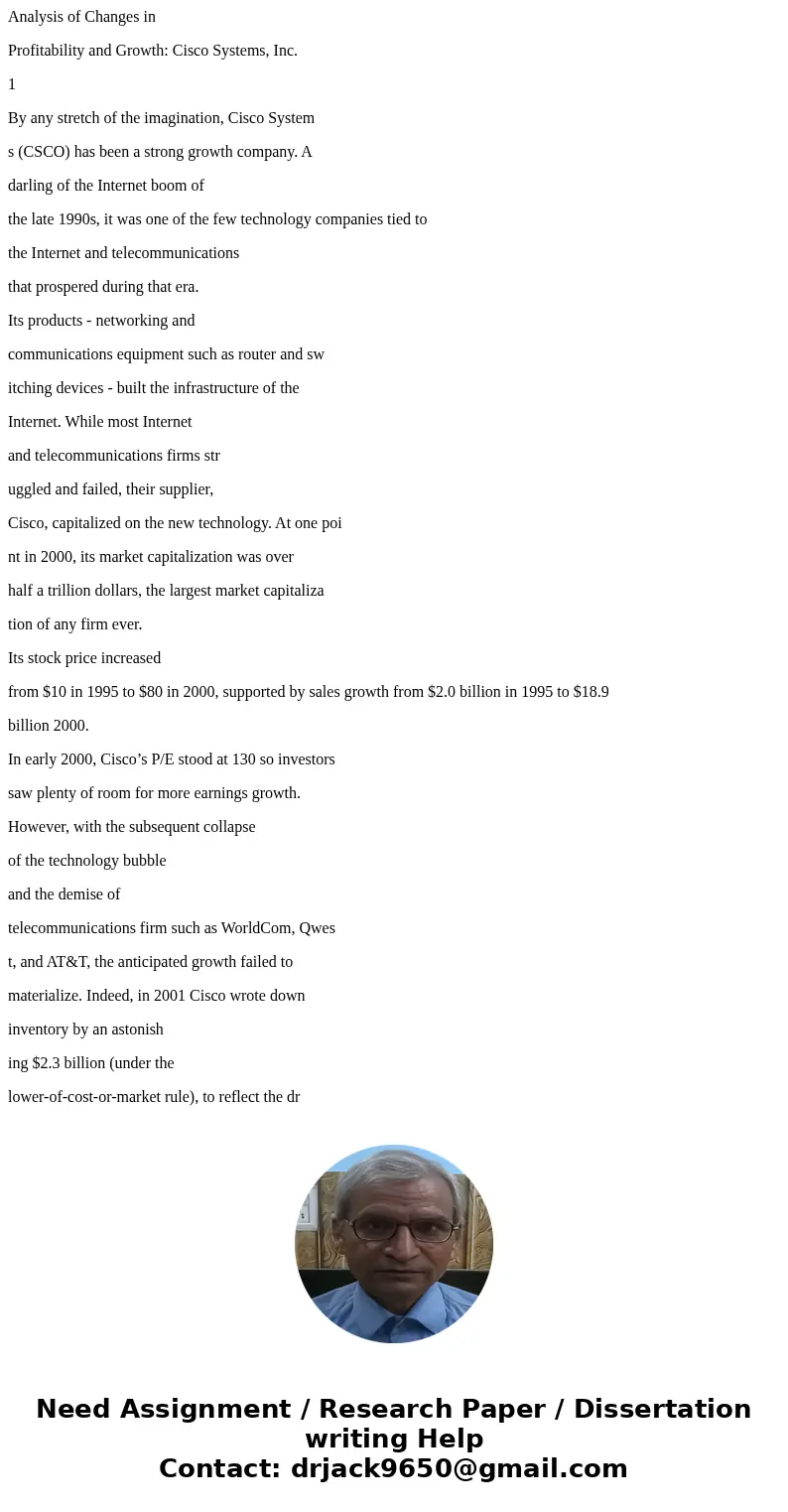
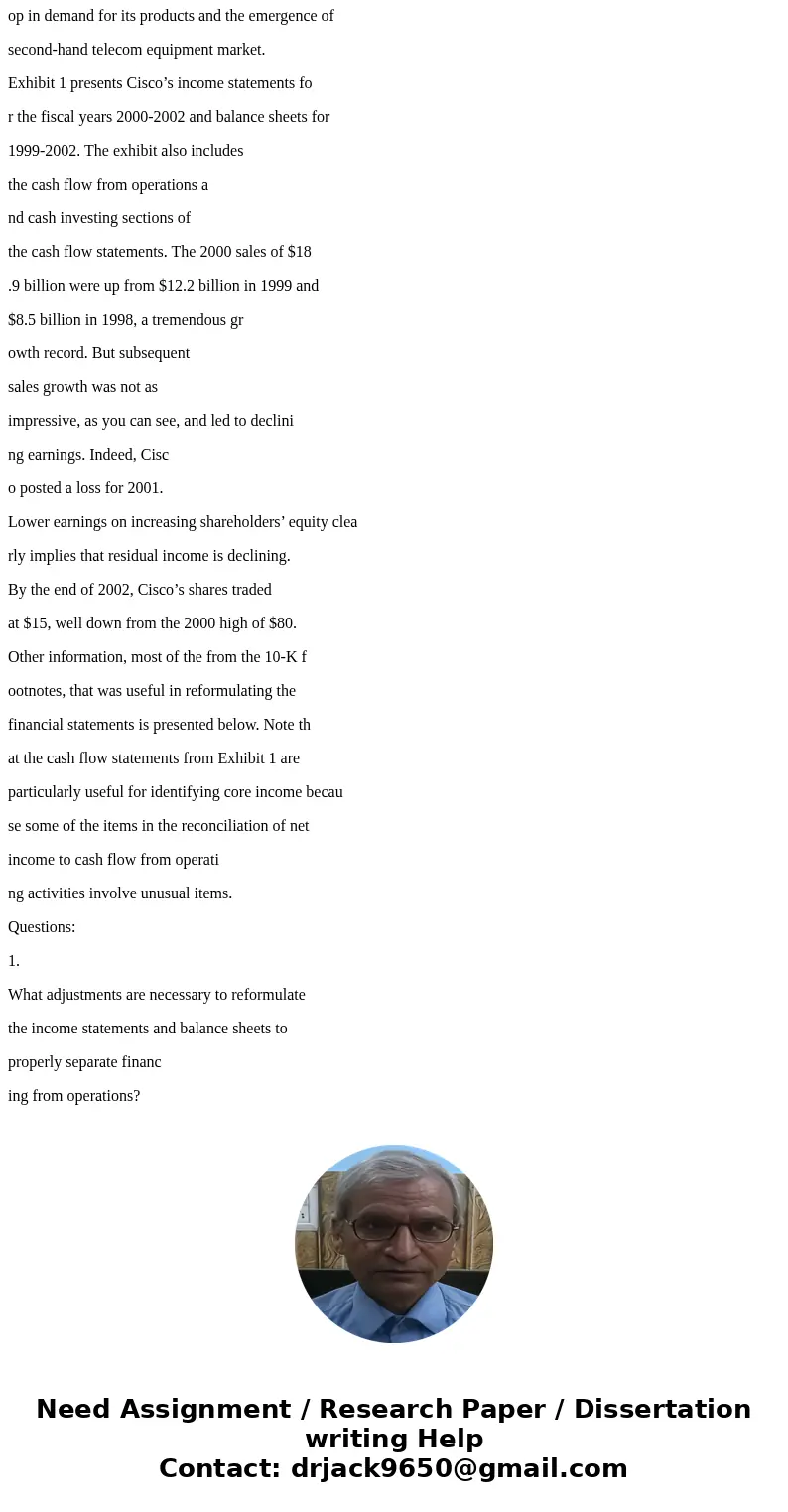
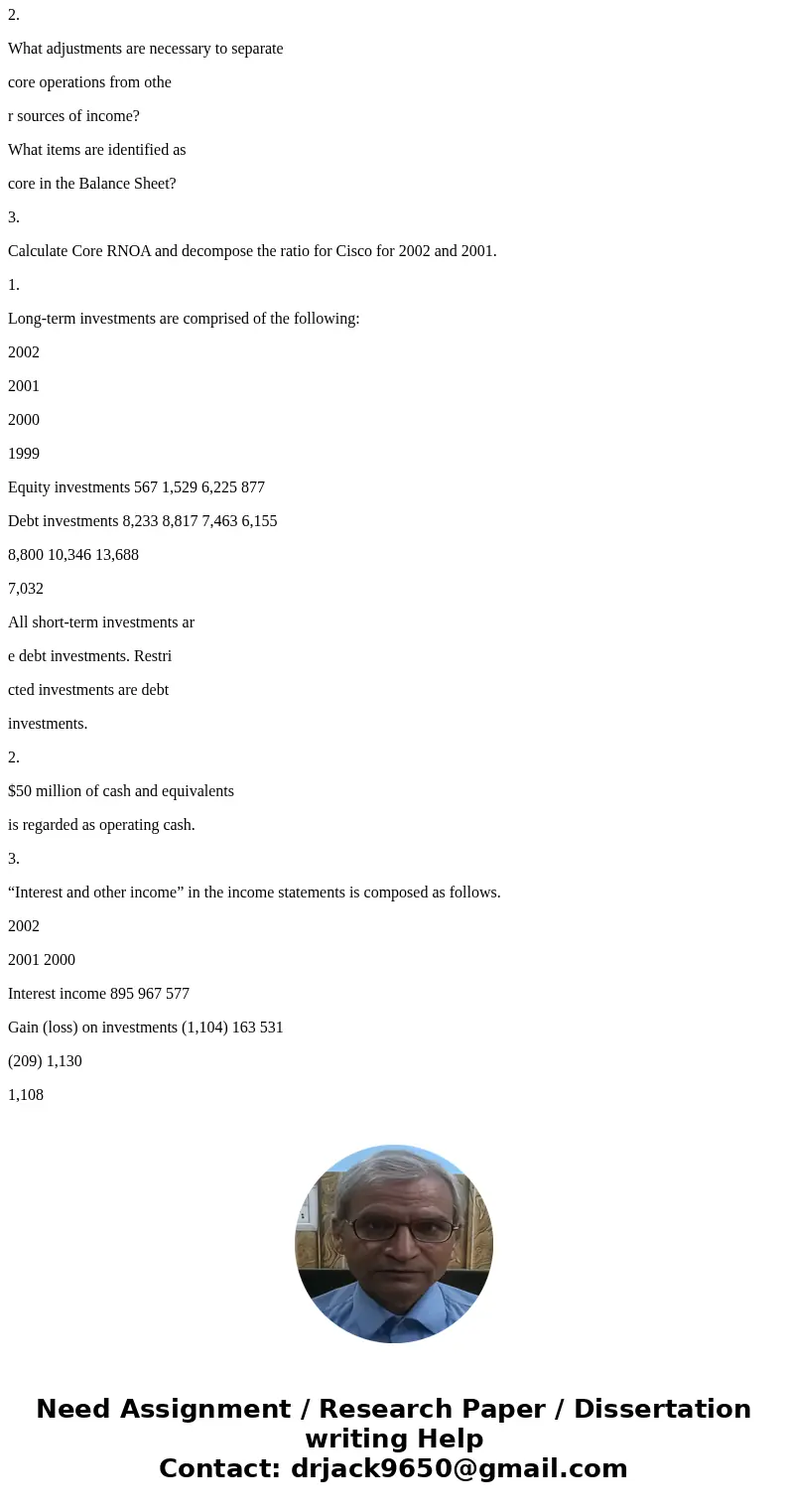
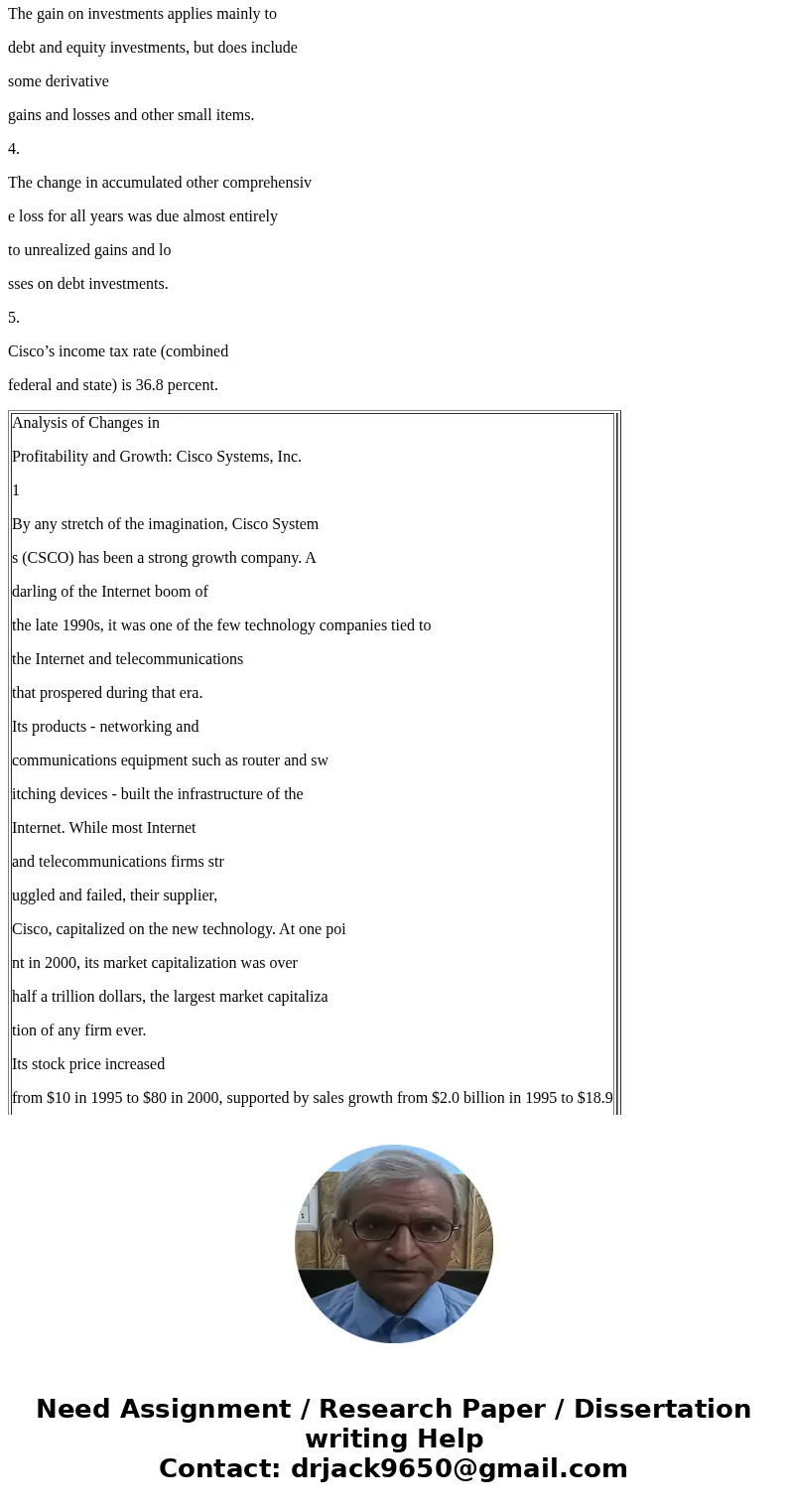
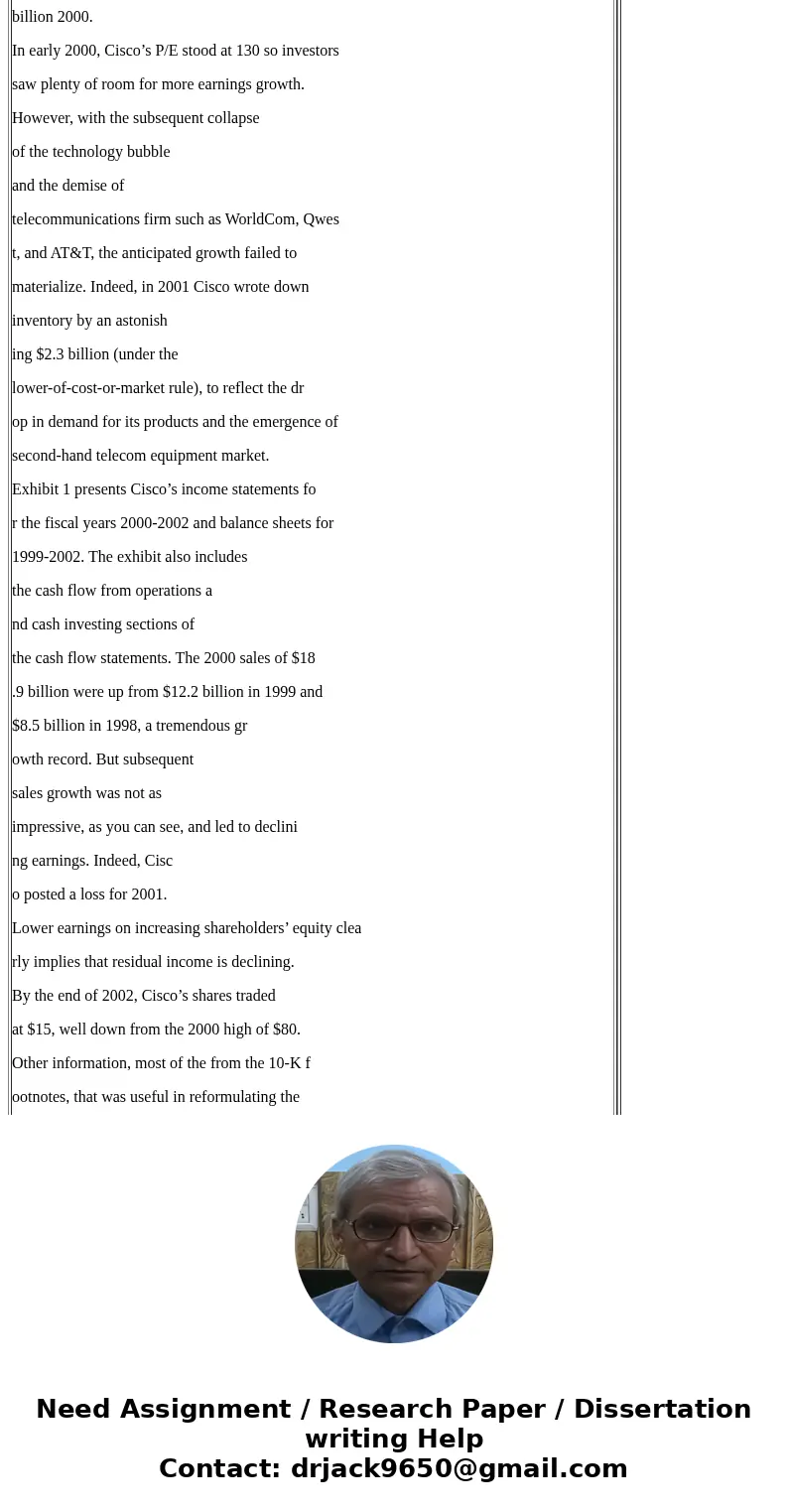
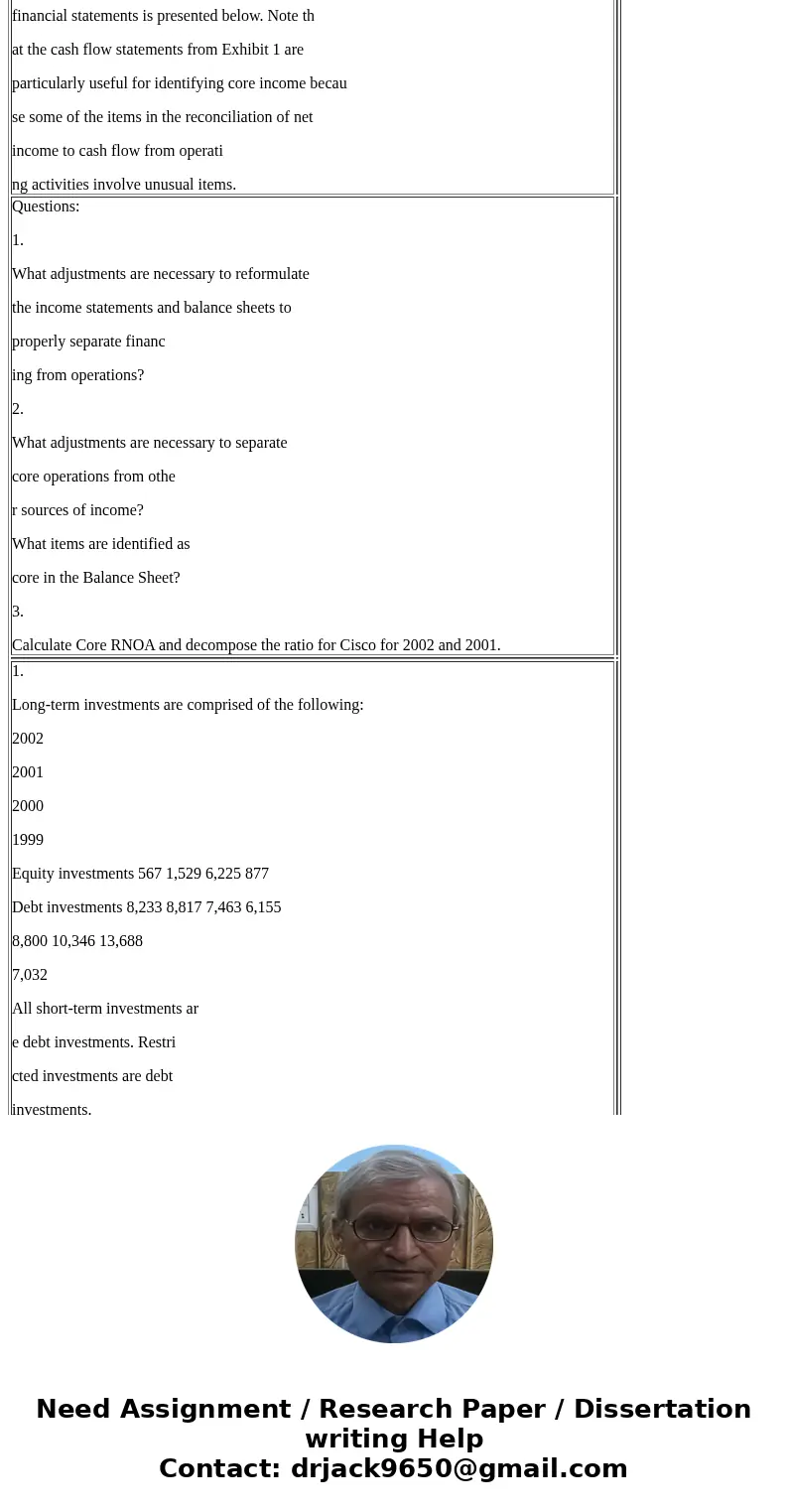
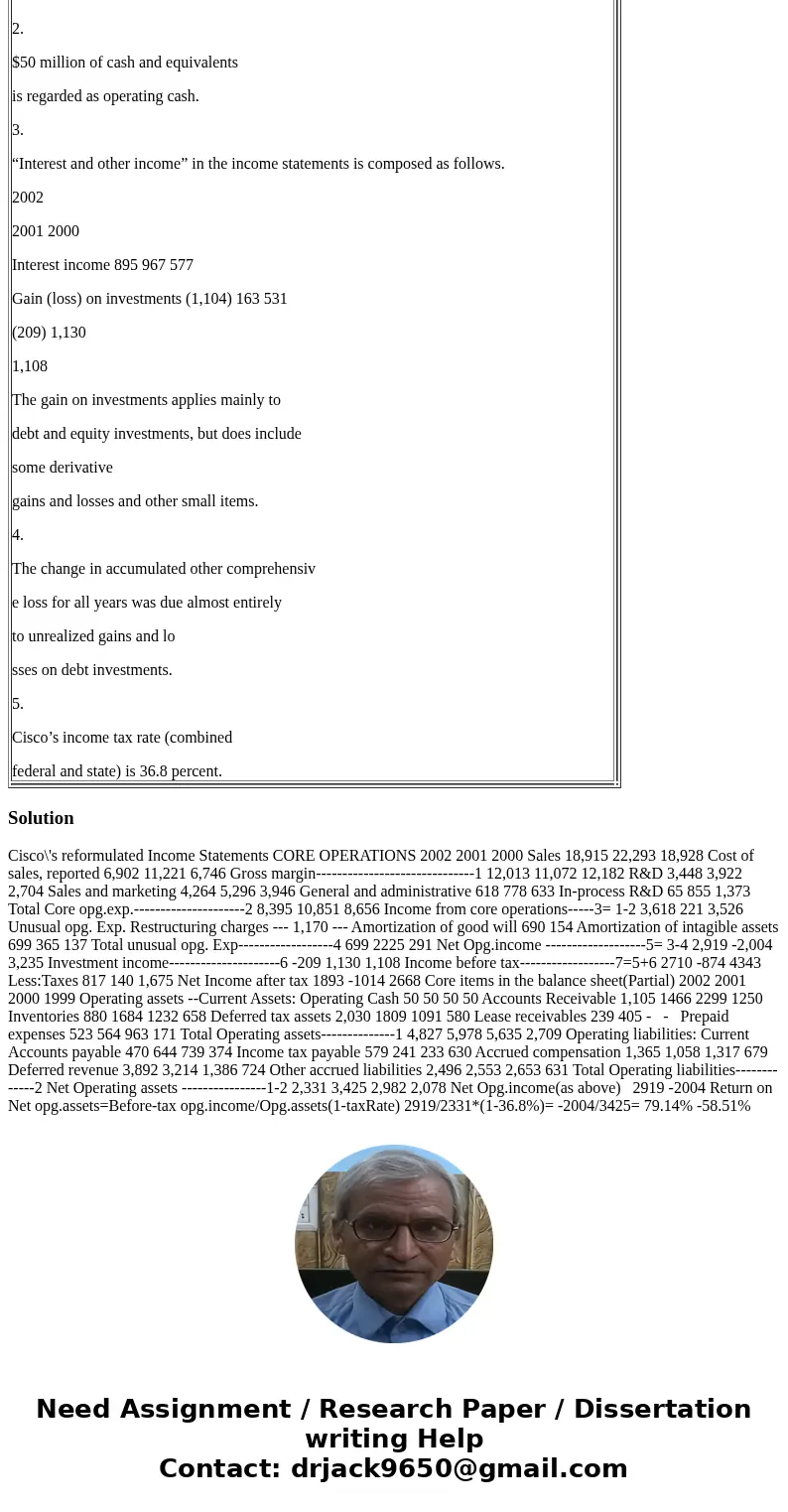
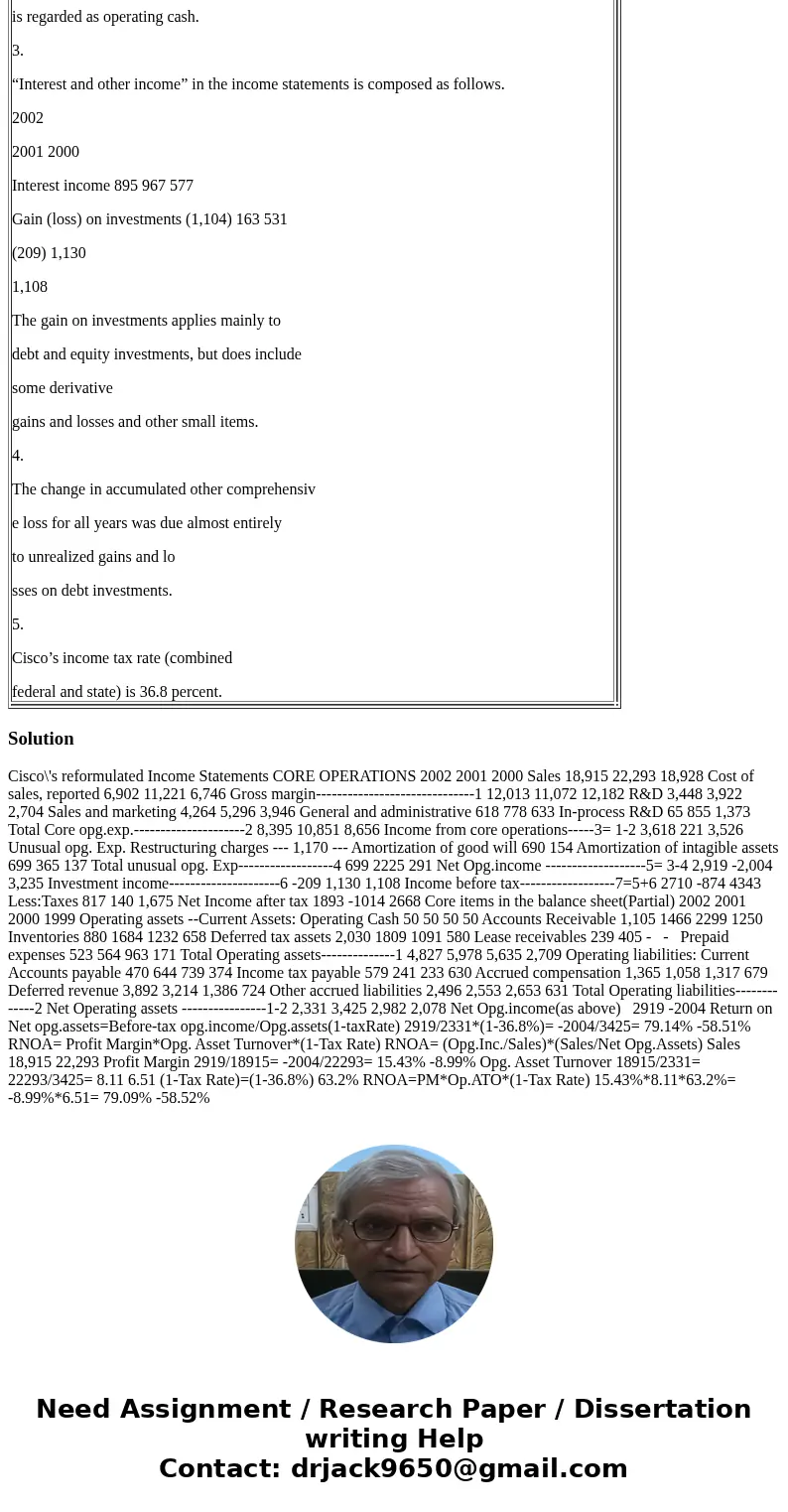
 Homework Sourse
Homework Sourse